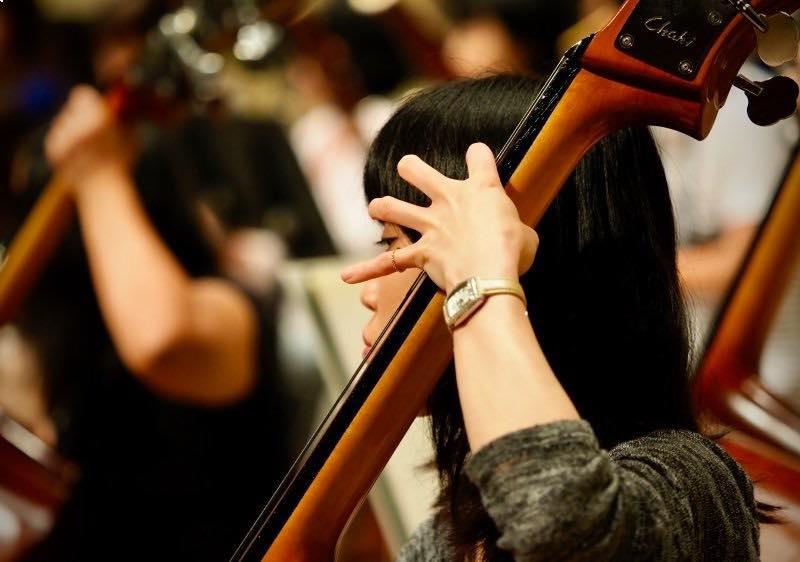Where can a cellist go to get easy cello sheet music, and how can you tell if the music is good?
My cello students don’t just learn classical repertoire, because if you play the same music every single day then your sound will grow uninspired and stale. Not to say classical is boring (I love classical!), but sometimes you need to practice outside your comfort zone. Some days, you might feel like working on fundamentals in a new genre, like jazz. Other times, you just want to have fun jamming to video game or TV music.
I want cellists to follow their inspirations by learning how to pick the best sheet music, so when they hear something inspiring, they can play it themselves.
This article will help you find sheet music resources, and offer tips on how to get the most out of the cello sheet music available. I will recommend resources in two categories, offline and online, and show how to build a recital program with these resources.
Note: this article contains several examples linked to external sites which may be best viewed on a computer or mobile device with the browser set to “Request Desktop Site.” These links are not sponsored content, and are provided for educational purposes only.
What Makes Sheet Music Good?
The best cello sheet music is any kind which gets you playing your cello. But once you’re trying to sight read or practice more effectively it makes a big difference which sheet music you picked.
Whether you are looking offline or online for easy cello sheet music, I want you to know when you’ve found good sheet music or whether you should keep looking. Here are some things I personally look for in my sheet music, and some tips for beginners who are still developing cello technique:
- Know all the symbols and clefs on the page. If you don’t know one, circle it and ask your teacher what it means during your next lesson, or send them a message on TakeLessons.
- Make sure the music is in your range by identifying the highest and lowest notes.
- Is the sheet music spaced well? Consider the space between, above, and below the notes; these margins will be filled with bowings and fingerings after a few practice sessions. Is there enough space to fit all the markings you need?
- Are bowings and fingerings already included?
- Are the numbers clear and logical? Does it use measure, line, or rehearsal numbers? Do they help you find spots to start and end, or are they just cluttering the page?
With these criteria in mind, let’s pick the best sheet music for a recital including one classical piece and one contemporary piece. First, let’s decide where to get the sheet music for our recital.
Where Are You Getting the Music?
There are two main categories for sheet music sources: offline and online. Each category has options which can be free or expensive. It is always important to understand why something is free, because as Andrew Lewis said: “if you are not paying for it, you’re not the customer; you’re the product being sold.”
Although this can sound pernicious, there are many safe and free resources available through public funding such as schools, libraries, and universities. The sheet music available through libraries is well-preserved and curated by music librarians with attention to the details listed above. Libraries usually have multiple editions of a single piece of music, which you can check out simultaneously. You can also make copies for personal use if public printers are available.
This music is free because of public funding through tax dollars, so all you need to use it is a library card! In addition, most libraries offer inter-library loans (ILLs), meaning your librarian can borrow sheet music from other libraries and have it shipped to you.
You can also find free sheet music at nonprofits such as churches, which may have hymnals or psalteries with hundreds of pages of sheet music. For our recital, I will stick to online resources, but I encourage you to ask your local librarians about sheet music inter-library loans and to consider other nonprofit options for free sheet music.
Which Music Should You Use?
Online sheet music can be free for a variety of reasons, including being in the public domain or being published under a creative commons license, but generally you can think of these sites as sheet music crowdsourcing.
The expression “you get what you pay for” is very true for online sheet music, but using our easy cello sheet music criteria we can find good sheet music from these sources.
The first source is the International Music Score Library Project (IMSLP), which hosts free sheet music in the public domain. Public domain music is sheet music whose copyright has expired, or whose author died more than 70 years ago. Because most cello music written prior to 1950 is automatically public domain in the US, IMSLP is a great resource for classical sheet music. You can see their list of cello scores sorted by level here. For our recital let’s look at two versions of Vocalise by Rachmaninoff.
Version One: [Download]
Editor: Shin-Itchiro Yokoyama
Version Two: [Download]
Editor: Unknown
Between these options, I prefer the Unknown edition, because the spacing is better for a practice part. This version is able to fit more markings for bowings, fingerings, phrasing, and dynamics, and it has clearly marked fingerings in measures 25-29, and expressive slurs marked in measures 20-23. If you aren’t sure how to read tenor clef, or treble clef in measure 37, you could circle those symbols and ask your teacher how to use this clef next lesson.
Community-Sourced Platforms for Contemporary Sheet Music
To find good contemporary sheet music I recommend community sourced platforms such as MuseScore. MuseScore is a notation software which I personally use to make student exercises and practice parts.
The software users can write their own sheet music and upload it for free. In order to print from MuseScore, you must pay a subscription fee, but it is free to view on a browser or iPad. In addition, the site allows you to play a midi file of the sheet music, which is very useful for picking the right sheet music.
Although the cello sheet music is huge (more than 4500 scores, compared to IMSLP’s 803 scores) you have to look carefully at the sheet music to find good practice parts which fit our criteria.
Megalovania from Undertale: [Download]
This score is great, because it is evenly spaced and has plenty of room for practice marks. It doesn’t have many bowings or fingerings marked, but with practice you and your teacher can make improvements to this sheet music.
Game of Thrones: [Download]
This score looks very clean at first, but the spacing is off. Notice that the number of measures per line changes, so the space each note takes up is uneven across the score. However, this music could still be used to determine the correct notes and rhythms.
- Other sites
Other sites which you may find useful are listed below. Apply the criteria above and you will find easy cello sheet music which motivates and inspires you to practice.
William Crider


